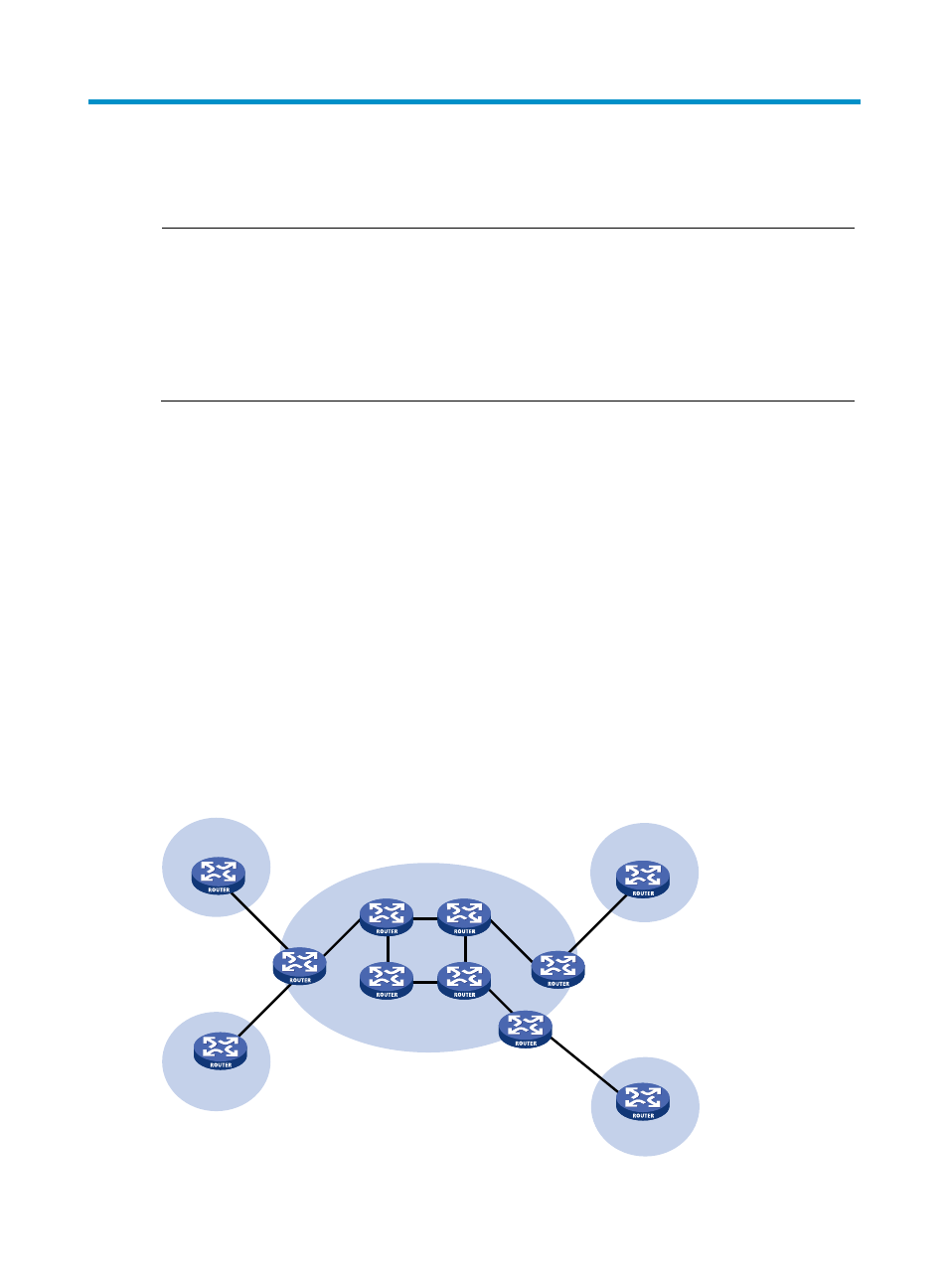Mpls l3vpn configuration, Mpls l3vpn overview – H3C Technologies H3C S10500 Series Switches User Manual
Page 232

221
MPLS L3VPN configuration
NOTE:
•
The term
router in this document refers to both routers and Layer 3 switches.
•
This chapter covers only introduction to and configuration of MPLS L3VPN. For information about MPLS
basics, see the chapter “MPLS basics configuration.” For information about BGP, see
Layer 3—IP
Routing Configuration Guide.
•
To support MPLS L3VPN, the H3C S10500 Switch Series must use an SE, EA, or EB card and use the
ports on the card to connect to the user network and the carrier network.
MPLS L3VPN overview
MPLS L3VPN is a kind of PE-based L3VPN technology for service provider VPN solutions. It uses BGP to
advertise VPN routes and uses MPLS to forward VPN packets on service provider backbones.
MPLS L3VPN provides flexible networking modes, excellent scalability, and convenient support for MPLS
QoS and MPLS TE. Hence, it is widely used.
The MPLS L3VPN model consists of the following kinds of devices:
•
Customer edge (CE) device: A CE resides on a customer network and has one or more interfaces
directly connected with service provider networks. It can be a router, a switch, or a host. It neither
can "sense" the existence of any VPN nor needs to support MPLS.
•
Provider edge (PE) device: A PE resides on a service provider network and connects one or more
CEs to the network. On an MPLS network, all VPN processing occurs on the PEs.
•
Provider (P) device: A P device is a core device on a service provider network. It is not directly
connected with any CE. It only needs to be equipped with basic MPLS forwarding capability.
Figure 53 Network diagram for MPLS L3VPN model
VPN 1
CE
Site 1
VPN 2
CE
CE
CE
Site 3
VPN 2
PE
VPN 1
Site 2
Site 4
PE
PE
P
P
P
P
